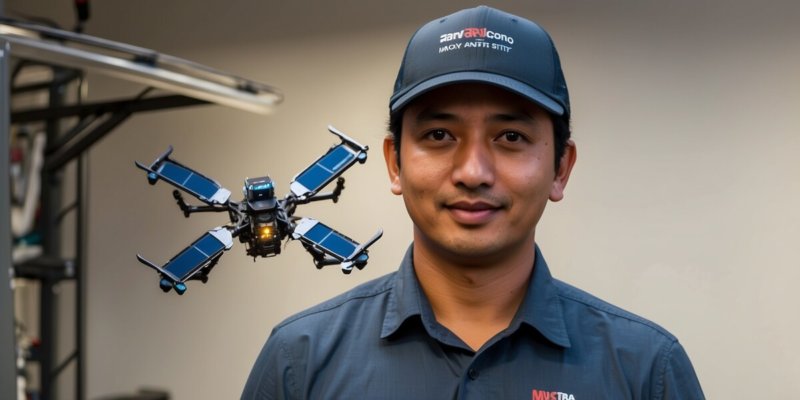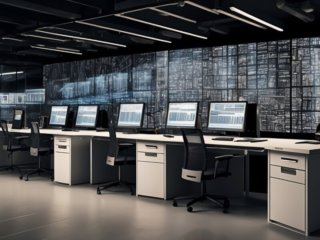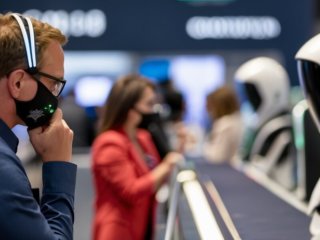- Last month, I took an extended break in a bid to keep my robotics newsletter Actuator up and running, reached out to some of the biggest names in the industry.
- Generative AI, through its ability to generate novel data and solutions, will significantly bolster the capabilities of robots.
- Legged robots have many advantages over wheels in homes and factories and bimanual (two-armed) robots are essential for many tasks.
- Agriculture presents a huge opportunity for robotics to tackle challenges of labor shortage, efficiency, and sustainability, as does transportation and last-mile delivery.
- True general-purpose embodied robots are at least 30 years away — well beyond any meaningful forecasting.
Last month, I took an extended break. In a bid to keep my robotics newsletter Actuator (subscribe ) up and running, however, I reached out to some of the biggest names in the industry. I asked people from CMU, UC Berkeley, Meta, Nvidis, Boston Dynamics and the Toyota Research Institute the same six questions, covering topics like generative AI, the humanoid form factor, home robots and more. You’ll find all of the answers organized by question below. You would be hard-pressed to find a more comprehensive breakdown of robotics in 2023 and the path it’s blazing for future technologies.
Generative AI and Its Role in Robotics
Matthew Johnson-Roberson, CMU: Generative AI, through its ability to generate novel data and solutions, will significantly bolster the capabilities of robots. It could enable them to better generalize across a wide range of tasks, enhance their adaptability to new environments and improve their ability to autonomously learn and evolve.
Dhruv Batra, Meta: Generative AI will play two distinct roles in embodied AI and robotics research: as data/experience generators and for architectures for self-supervised learning.
Aaron Saunders, Boston Dynamics: Generative AI offers opportunities to create conversational interfaces to robots, improve the quality of computer vision functions and potentially enable new customer-facing capabilities such as visual question answering.
Russ Tedrake, TRI: Generative AI has the potential to bring revolutionary new capabilities to robotics, giving robots a more robust understanding and reasoning about the world.
Ken Goldberg, UC Berkeley: Large language and Vision-Language-Action models are being trained to facilitate robot perception and to control the motions of robot arms and legs.
Deepu Talla, Nvidia: Generation AI will accelerate simulation development, improve robot understanding of the world, and enable easier task definition and robot (re)programming.
The Humanoid Form Factor
Ken Goldberg, UC Berkeley: Legged robots have many advantages over wheels in homes and factories and bimanual (two-armed) robots are essential for many tasks.
Deepu Talla, Nvidia: Humanoids are mobile manipulators that will need multimodal AI to understand more of the environment around them.
Matthew Johnson-Roberson, CMU: The humanoid form factor is a complex engineering and design challenge, but has the potential to be extremely versatile and intuitively usable.
Max Bajracharya, TRI: Robots might assist people in human-designed environments, but they don’t need to take a humanoid form factor.
Dhruv Batra, Meta: The humanoid form factor is essential for general-purpose robots to operate in environments designed for humans.
Aaron Saunders, Boston Dynamics: Humanoids aren’t necessarily the best form factor for all tasks, and the future potential is still being explored.
The Next Major Category for Robotics
Max Bajracharya, TRI: Agriculture presents a huge opportunity for robotics to tackle challenges of labor shortage, efficiency, and sustainability, as does transportation and last-mile delivery.
Matthew Johnson-Roberson, CMU: The agricultural sector presents a huge opportunity for robotics, as do transportation and last-mile delivery as technologies mature and regulatory frameworks evolve.
Aaron Saunders, Boston Dynamics: The next major category for robotics will likely happen in areas like construction and healthcare, as sectors with large workforces and high demand for skilled labor.
Deepu Talla, Nvidia: Markets where businesses are feeling the effects of labor shortages and demographic shifts will continue to align with robotics opportunities.
Ken Goldberg, UC Berkeley: I see many more robots in manufacturing and warehouses in the near future and impressive progress in self-driving taxis.
True General-Purpose Robots
Dhruv Batra, Meta: True general-purpose embodied robots are at least 30 years away — well beyond any meaningful forecasting.
Deepu Talla, Nvidia: True general-purpose embodied autonomy is further out, but robots continue to become more intelligent and capable.
Matthew Johnson-Roberson, CMU: The advent of true general-purpose robots is still a distant reality, requiring breakthroughs in AI, machine learning, materials science, and more.
Russ Tedrake, TRI: The field can make steady progress from niche robots toward more general-purpose robots, benefiting from increasing levels of autonomy.
Ken Goldberg, UC Berkeley: True AGI and general-purpose robots are not expected in the near future, and researchers are making steady progress.
Aaron Saunders, Boston Dynamics: Many hard problems stand between today and truly general-purpose robots, but the field is seeing exciting acceleration of technology.
Home Robots in the Next Decade
Matthew Johnson-Roberson, CMU: True general-purpose robots in the home are still a distant reality, requiring breakthroughs in multiple fields and a step-by-step evolutionary process.
Deepu Talla, Nvidia: We can expect useful personal assistants, lawn mowers and robots to assist the elderly in common use, but challenges remain for indoor home environments.
Max Bajracharya, TRI: Homes remain a difficult challenge for robots due to their diverse and unstructured nature, and predictions about the future are difficult but robotics is advancing quickly.
Aaron Saunders, Boston Dynamics: Affordable home robots that can declutter, pick up things from the floor and place them into appropriate bins are predicted for the next decade.
Ken Goldberg, UC Berkeley: Within the next decade, we will have affordable home robots that can perform tasks like decluttering, benefitting parents and senior citizens despite occasional mistakes.
Dhruv Batra, Meta: The core technology for home robots is not yet ready.
Under-Covered Robotics Stories/Trends
Aaron Saunders, Boston Dynamics: The trend toward physical embodiment enabled by advances in technology like computers, perception sensors, and power sources is not receiving enough coverage.
Ken Goldberg, UC Berkeley: Robot motion planning and the ongoing problem of robot “singularities” are not receiving adequate attention in the field of robotics.
Russ Tedrake, TRI: The quiet revolution in simulation that has made it possible to train and test computer vision systems is not getting sufficient coverage in the industry.
Dhruv Batra, Meta: The successful testing of navigation robots in real homes without the luxury of building precise maps is an under-covered trend in robotics.
Deepu Talla, Nvidia: The need for a platform approach in robotics to develop more generalizable robots with simulation capabilities is an under-covered trend in the industry.
Matthew Johnson-Roberson, CMU: The incremental but impactful successes in sectors like agriculture, healthcare, or specialized industrial applications are not receiving enough spotlight in the robotics field.





